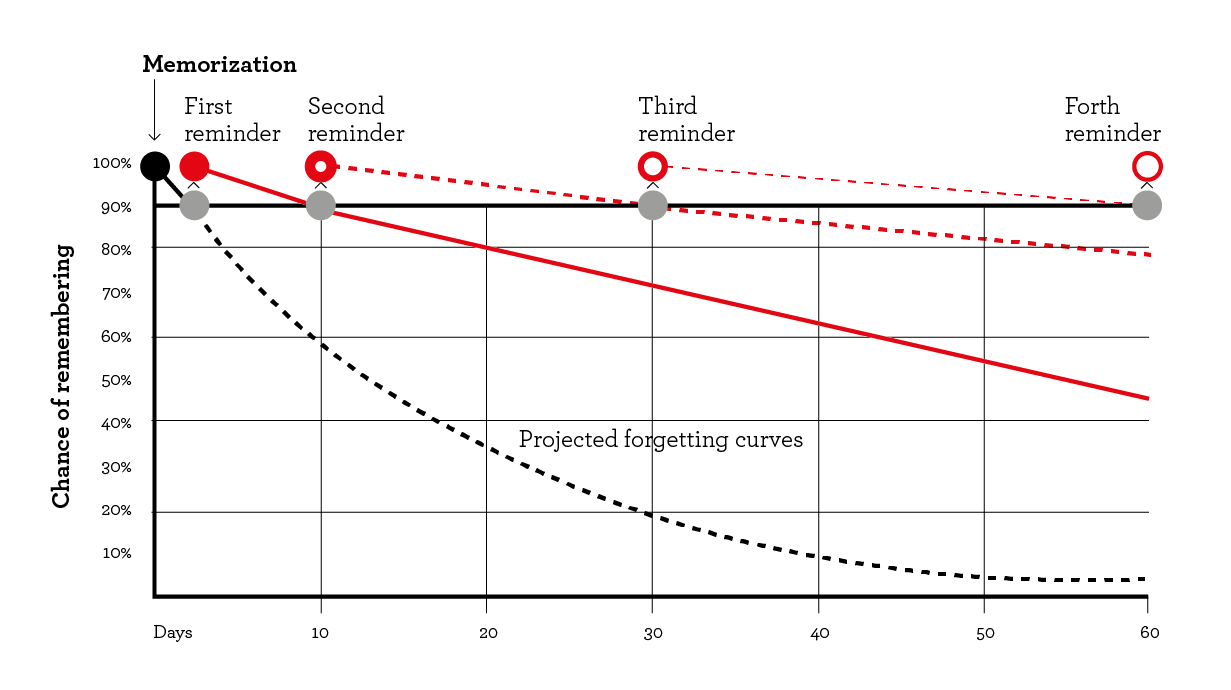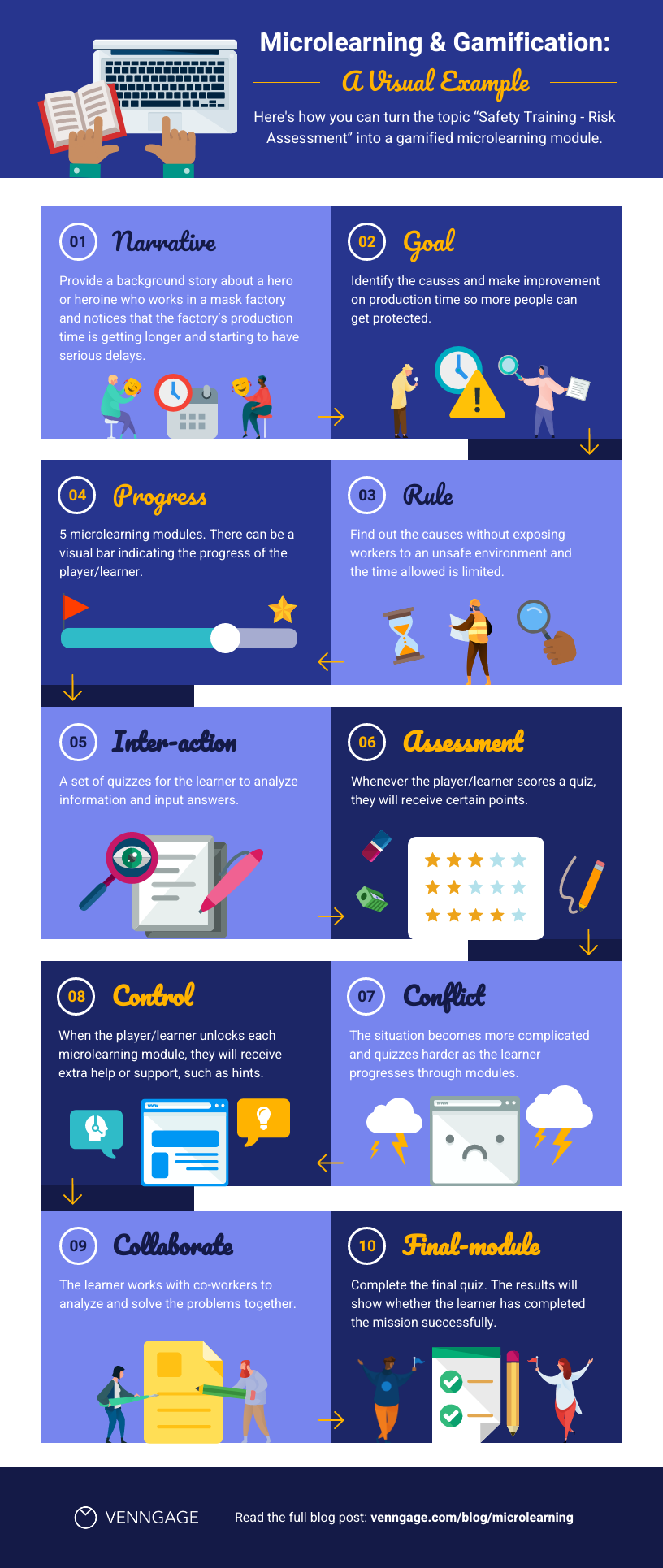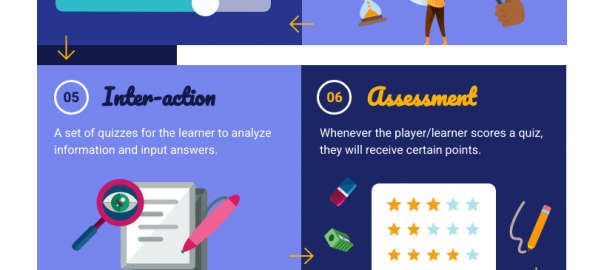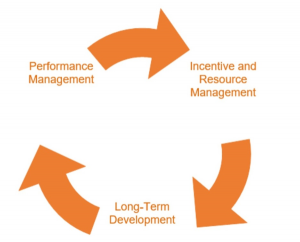Employee training has become an important part of business growth, especially with the rise of remote work. Does that mean businesses should create more intensive training programs?
According to instructional designer Dr. Jiani Wu, microlearning modules are more effective in training retention than longer learning sessions.
But what is microlearning? And why does it work better than traditional learning programs?
Microlearning Defined
Companies that have regularly run training programs may find themselves asking what is microlearning?
This is the process by which bite-sized content pieces are transmitted to employees over days, weeks, or months.
With microlearning, employees can overcome the forgetting curve, seen below, because the information is reiterated regularly.

This is particularly useful because employees have to undergo several kinds of training in a job—onboarding, skills training, and job growth training.
It isn’t reasonable to expect employees to drop what they’re doing so they can spend more time training. That’s why micro training is such an effective method.
What are the Benefits of Microlearning?
There are numerous benefits of microlearning precisely because of the short length of the modules and how it is spaced out at regular intervals for improved retention.
1. Improves Information Transfer
Employees can’t do their jobs and attend training sessions at the same time. That is a lot of information being stored in the brain—something is bound to get left behind.
Why microlearning techniques are so effective is because they break down complex information into bite-sized, easily digestible pieces of content.
Additionally, because the modules are spaced out, the information gradually moves from the employee’s short-term memory to their long-term memory.
The learner has no time to forget what they have learned because the next module reiterates what was learned in the earlier modules.
2. Microlearning is Customizable
There are several customization options available with micro training. It isn’t a long-form team training system so it doesn’t require much investment in terms of time.
Because the content is available at any time, employees can dip in and out whenever is convenient for them, thus improving their retention.
Additionally, micro training is a more informal setup. Learners don’t need to sit in a conference room for hours to learn—they can learn new skills from the comfort of their desk.
3. Better Training Engagement
One of the major benefits of microlearning is that it improves the levels of engagement with content.
Too much information can be difficult to absorb, let alone remember. Coupled with everyday tasks and stresses, training programs held over days can lead to a loss of engagement.
But short sessions where the content is distilled into necessary facts and skills make it easier for learners to engage and recall what they have learned.
Since microlearning videos and graphics focus on a single topic, they are simpler to understand, thus giving learners more incentive to keep learning.
Making learning modules available on multiple platforms—across mobile and desktop—also helps to create more engagement. Learners can pick up the course from anywhere they want.
4. Less Expensive
The longer a training session is, the more expensive it becomes. The amount of material needed to create a day-long course, or longer, is immense.
On the other hand, microlearning doesn’t require that much investment. Each module is short and thus, less expensive.
The fiscal benefits of microlearning make it a much more profitable option for businesses, no matter their size.
Implementing Microlearning Training Programs
Implementing microlearning programs can be challenging until training teams become accustomed to the nuances of this style.
Here are three steps that teams can follow when creating microlearning modules.
1. Determine Learning Goals
The content of any micro training session needs to be grounded in the goals of the organization. These are some key questions to ask:
- What is the primary topic that the videos will focus on?
- What additional or supplementary information is required?
- Is this a learning topic to increase employee knowledge?
- Is the goal to improve the skills of trainees?
- Or is the goal to impart technical knowledge or training?
Most of these questions can be answered by surveying employees and asking them what skills gaps exist for them, and which areas the company needs to improve.
Get buy-in from managers as to the direction of the learning topics—they will have a better idea of the overall team goals.
This is also the stage at which platforms need to be determined—will mobile-friendly websites need to be designed? What about an app? Or will the lessons be hosted on YouTube?
Trainers also need to determine whether the microlearning modules will be accompanied by macro learning sessions.
The learning goals set will help all the other pieces of the program fall into place.
2. Use Visuals for Microlearning
Visuals can have a positive impact on training retention. There are numerous kinds of visuals to include in a training session.
Infographics are powerful visuals that combine text, data, imagery, and illustrations to create comprehensive and memorable stories. They are an essential part of any training exercise.
There are several online tools to create infographics and trainers can also create infographics in PowerPoint, like the example below.

Source: Venngage
Videos are an excellent way to share these modules. Keep the length of videos to five minutes, at the most, to make the most of the benefits of microlearning.
By using visuals, businesses can make their training modules easier to absorb and recall.
3. Track and Improve
All training techniques need to be measured so that organizations can learn which areas require improvement.
Set up a system to track the success of the microlearning sessions by using the below guidelines:
- Ask employees for feedback on the videos
- Track how many employees participated in the sessions
- Was there a dropping-off point for the modules?
- Which learning platforms did employees access the modules on?
- What was the completion rate for the entire course?
- Has there been on-the-job improvement related to the learning modules?
Measuring how the microlearning videos were received and used will make it easier to create better programs in the future.
Key Takeaways: Microlearning Makes Learning Retention More Effective
There is so much work-related content that employees have to parse through—adding content in the guise of eLearning can feel like a burden.
Businesses would benefit from implementing microlearning programs that contain bite-sized lengths of information, in other words, microlearning.
This also helps employees retain the knowledge they have learned for longer periods of time, making the process more efficient in the long-term.
Business & Finance Articles on Business 2 Community
(89)
Report Post







